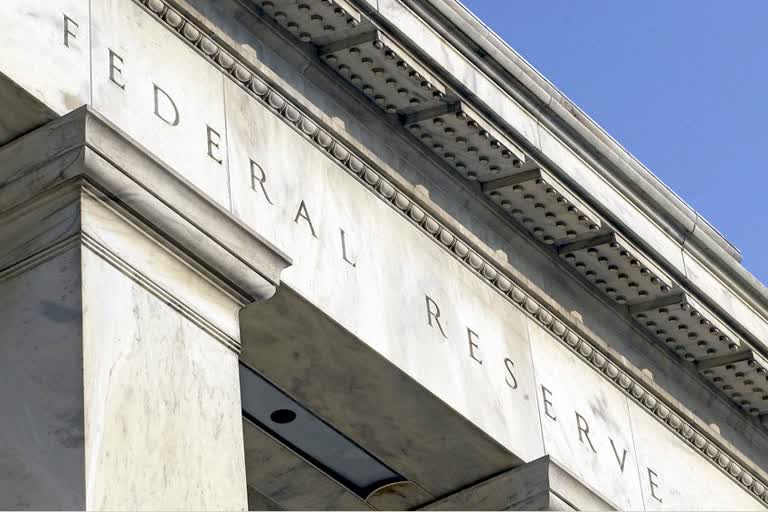Washington: The US Federal Reserve cut the benchmark lending rate on Wednesday for the first time in more than a decade, moving to stimulate the economy after a year of sustained pressure from President Donald Trump.
The target for the federal funds rate is now 2.0-2.25 per cent, 25 basis points lower, and the central bank vowed to "act as appropriate to sustain the expansion."
However, two officials on the policy-setting Federal Open Market Committee opposed the move to provide more stimulus to the economy and dissented in the vote.
The Fed also gave Trump something else he has demanded in his unrelenting attacks: an early end to a policy known as "quantitative tightening" or QT.
Beginning August 1, that means the Fed will stop reducing the huge amount of securities it built up during the global financial crisis.
"In light of the implications of global developments for the economic outlook as well as muted inflation pressures, the committee decided to lower the target range for the federal funds rate to 2 to 2-1/4 per cent," the FOMC statement said.
While the committee continues to expect sustained economic expansion and gradually rising inflation to the Fed's two per cent target, "uncertainties about this outlook remain."
Officials will "continue to monitor the implications of incoming information for the economic outlook and will act as appropriate to sustain the expansion, with a strong labour market and inflation near its symmetric 2 per cent objective."
Fed Chair Jerome Powell will hold a news conference starting at 1830 which will be watched with interest to see if he hints that more interest rate cuts are ahead.
Read more:India's manufacturing activity rises to 52.5 points in July, higher output: PMI
It was a fairly sudden reversal for the Fed which raised the rate that influences the cost of all types of business and consumer loans, including credit cards and mortgages, four times last year, most recently in December.
Trump, whose aggressive trade policies have thrown a wrench into the world economy and complicated the Fed's carefully laid plans, will certainly welcome the rate cut and likely call for more, as he has been doing for months.
However, Esther George, head of the Kansas City Federal Reserve bank, and Eric Rosengren, of Boston, dissented in the 8-2 vote, because they "preferred at this meeting to maintain the target range for the federal funds rate at 2-1/4 to 2-1/2 per cent." The statement recognized that the "labour market remains strong and that economic activity has been rising at a moderate rate."
In fact, with unemployment at 3.7 percent, near the lowest point in 50 years, and average job creation in the first half of this year has slowed at 172,000 new positions a month -- slower than the 223,000 in all of 2018, but still solid -- some economists see little need for the Fed to provide additional stimulus.
Others see concerns on the horizon: a slowdown in China's growth, the European Union on the brink of an unknown Brexit outcome, added to a drop off in US business investment and rising corporate debt levels. They say the Fed is right to retreat for now.
"The Fed is focused on inflation, and for good reason," Canaccord Genuity chief equity strategist Tony Dwyer said in an analysis. "The Fed has spent decades worried about higher inflation when the economy reaches full employment, yet when it reached the historically low current level, there was no sign of it." Inflation is "monster that hasn't come," Dwyer said.
However, economist Joel Naroff disagrees, saying "the data don't point to a faltering economy only a moderating one." "Where we go from here, though, is the real question and, given the rapidity with which Whiplash Jay changes direction, I have little idea what the next move will be," Naroff said in a research note.



